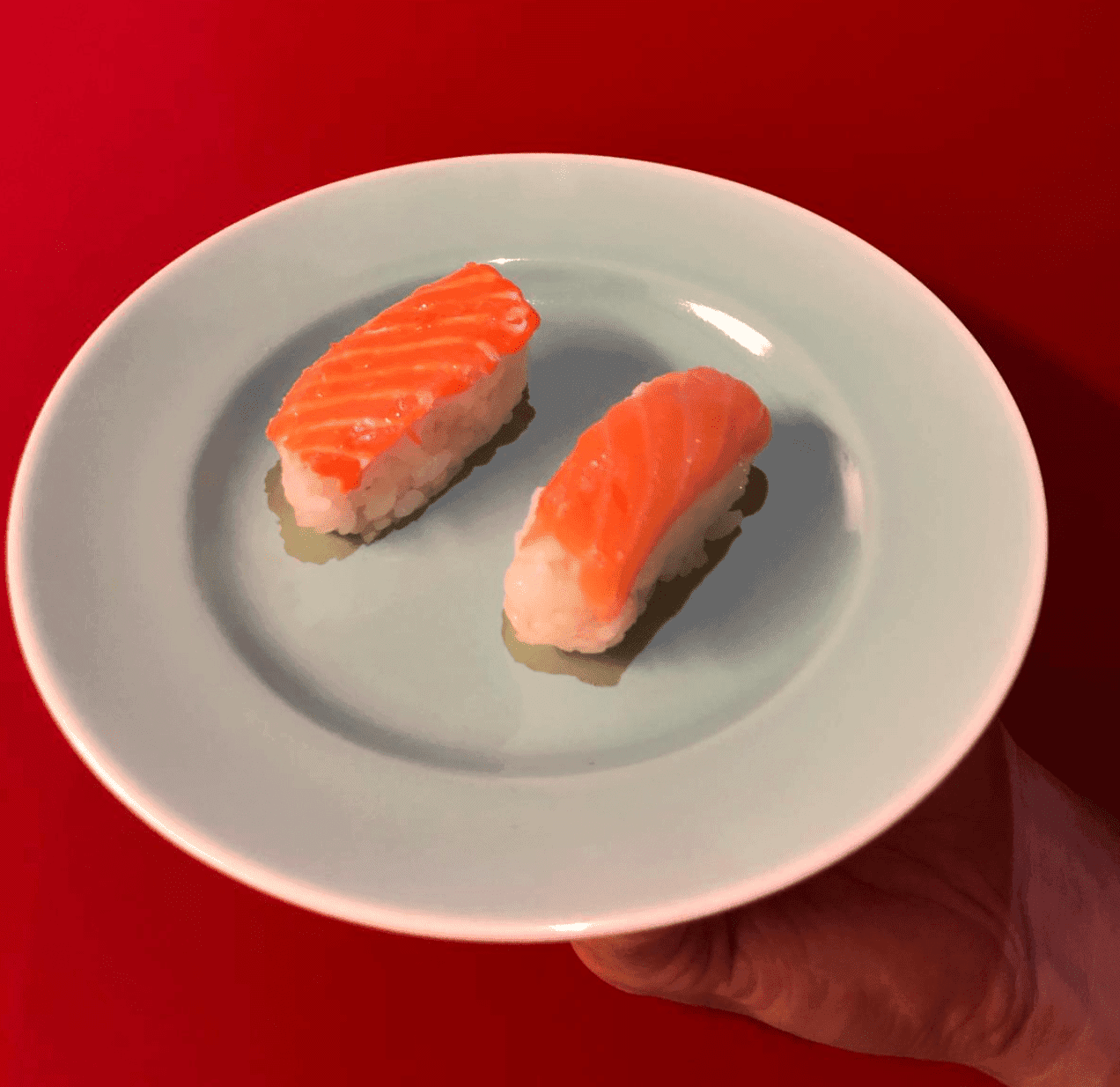Austrian startup Revo Foods produces plant-based fish products, but not the formed and fried items that are becoming increasingly common in grocery store aisles. Revo is making structurally sophisticated products: sheets of smoked salmon, salmon fillets, and sushi cuts with a realistic look and feel.
We’ve already seen cell-cultured meat startups use 3D printing to create cuts of meat with complex fat and tissue structures. Revo has brought 3D printing into the plant-based fish arena, and the company is betting that the resulting products will win over more seafood eaters.
This week, company CSO Theresa Rothenbücher joined The Spoon on Zoom to talk about Revo’s 3D printing technology and vision for scaling up.
“3D printing is our core technology here at Revo because it gives us the possibility to produce precise structures,” says Rothenbücher. With 3D printers, the team can closely mimic the appearance of a salmon fillet, with its layers of orange muscle and white connective tissue.
Revo is currently ironing out its production process, both by speeding up the actual printing, and by experimenting with other techniques that can be used to complement 3D printing.
But the company is also working on an ambitious plan to boost its production capacity. 3D printers have typically been used to produce prototypes, but Revo wants to scale up the technology. Rothenbücher describes the team’s vision: A production-scale facility that houses interconnected 3D printers of varying sizes. To save space, printers could be stacked on top of each other. An automated conveyor belt system would run through the facility.
Austria already generates around 80% of its energy from renewable sources, but the team is still working on maximizing the facility’s energy efficiency. “We are designing it in a way that we hope will avoid wasting energy, kind of like a closed circuit system,” says Rothenbücher. “So really, sustainability is one of our main focus points—besides having a great taste.”
The idea of producing food in a high-tech, 3D printing factory might seem like a potential turnoff for buyers, but Rothenbücher is optimistic about consumer acceptance. Revo has already produced some animated videos to introduce the technology—and brought out printers to meet consumers face-to-face.
“We usually bring one of our R&D printers to events, and then show people how the food material is transformed into the salmon products. Usually, they really like it and are fascinated with it, and if they can directly taste it, it’s even better,” says Rothenbücher. “Of course, it is not a traditional way of producing food. But then, we are a new generation.”
Revo has already tested its products at restaurants in Vienna, with positive results. The company plans to launch a line of fish spreads in early 2022, and to introduce sushi and whole cuts sometime after that.
The team selected salmon as a flagship offering because of the species’ popularity and environmental concerns linked to salmon aquaculture. They’ve also created some tuna products, and in the future, they’ll consider expanding to other species. As Rothenbücher says: “There are so many different fish in the sea.”
While Revo is focused on plant-based fish products for the time being, Rothenbücher believes that there will be opportunities for the company to collaborate with cell-based companies or manufacture hybrid products in the future. With specialized, upscaled technology for printing realistic cuts of fish, Revo could position itself as a production partner for cell-cultured startups moving toward commercialization.


